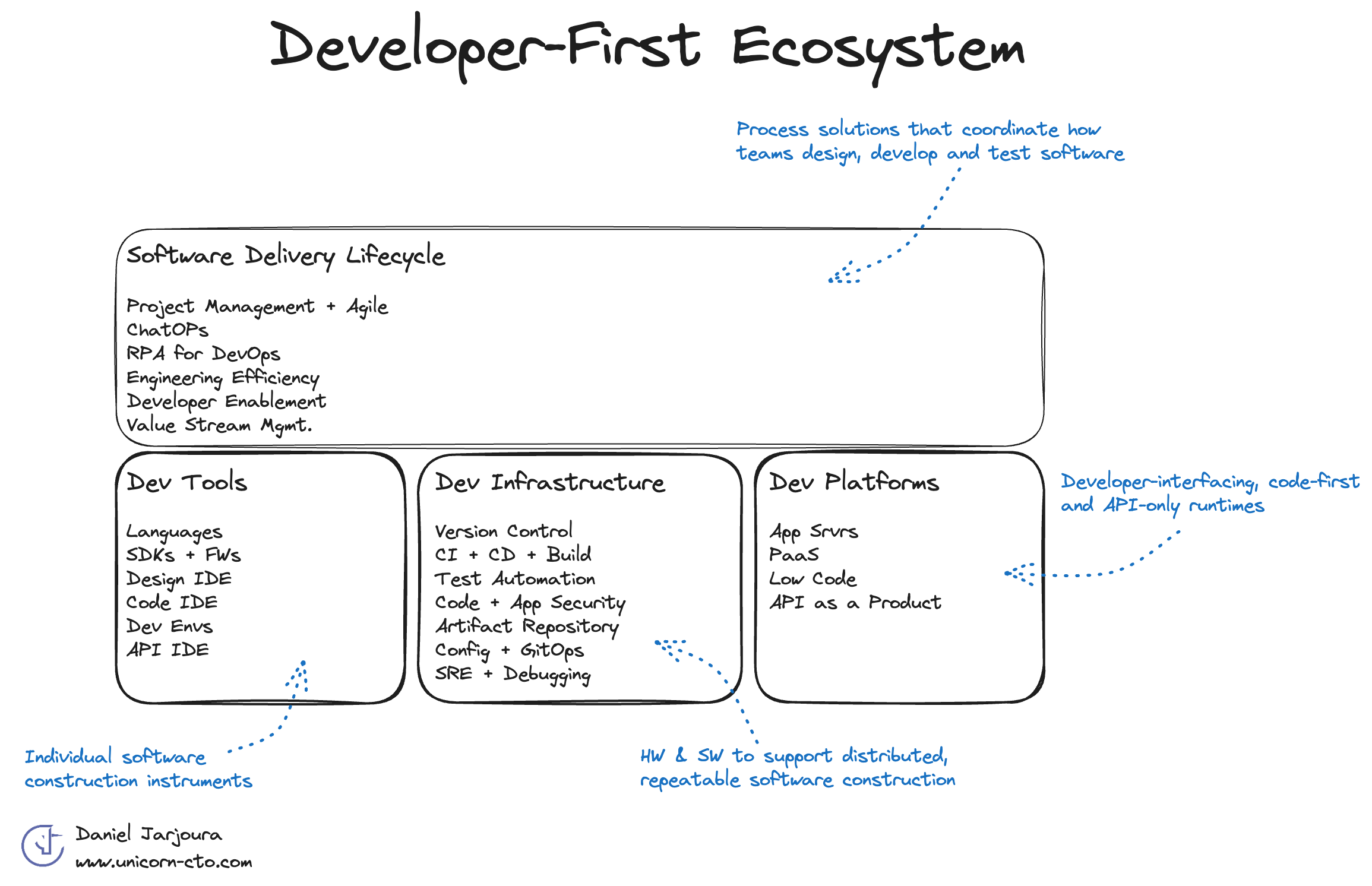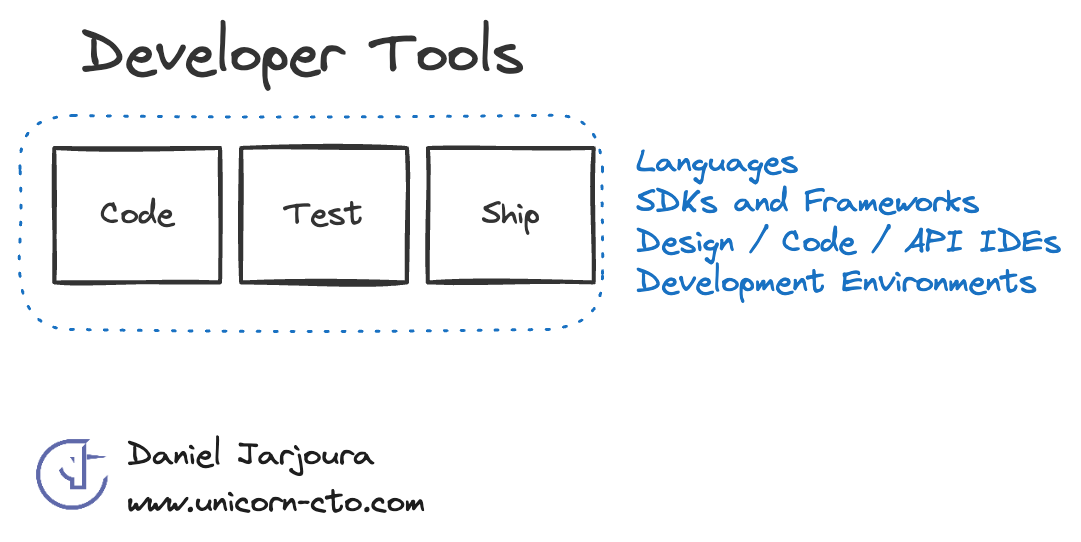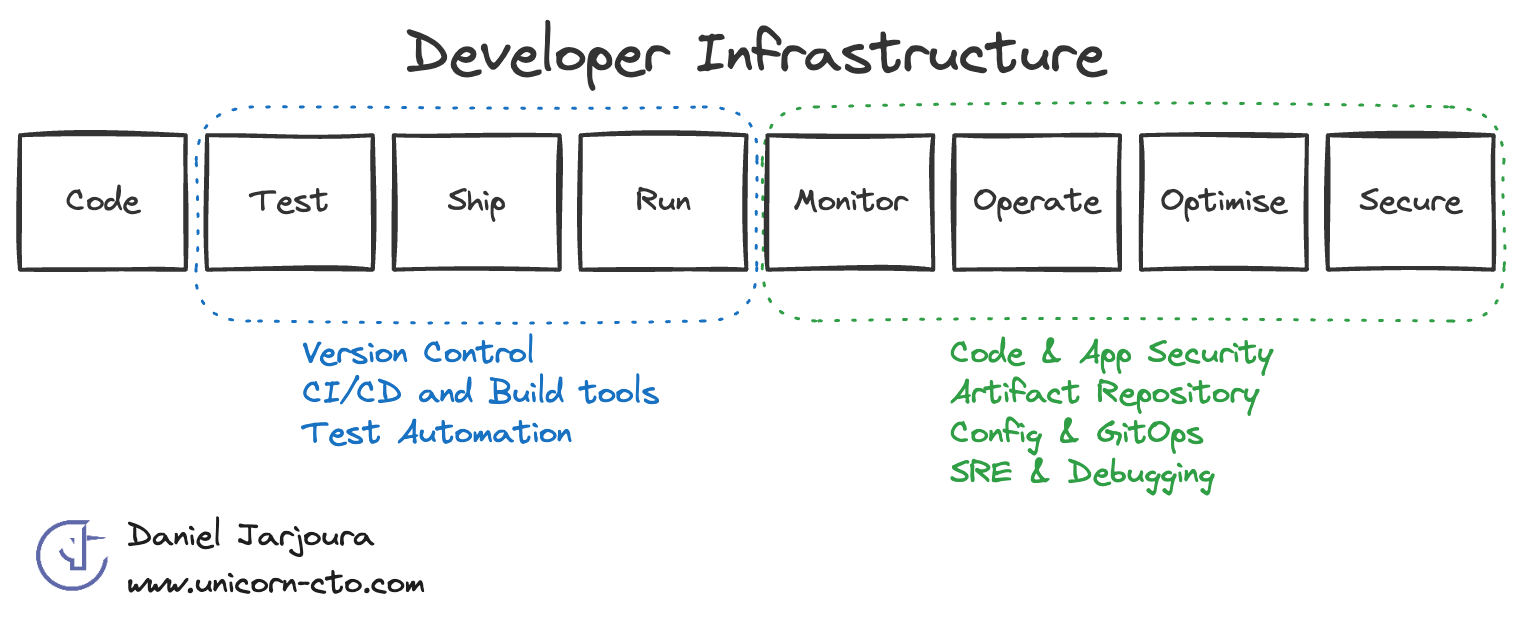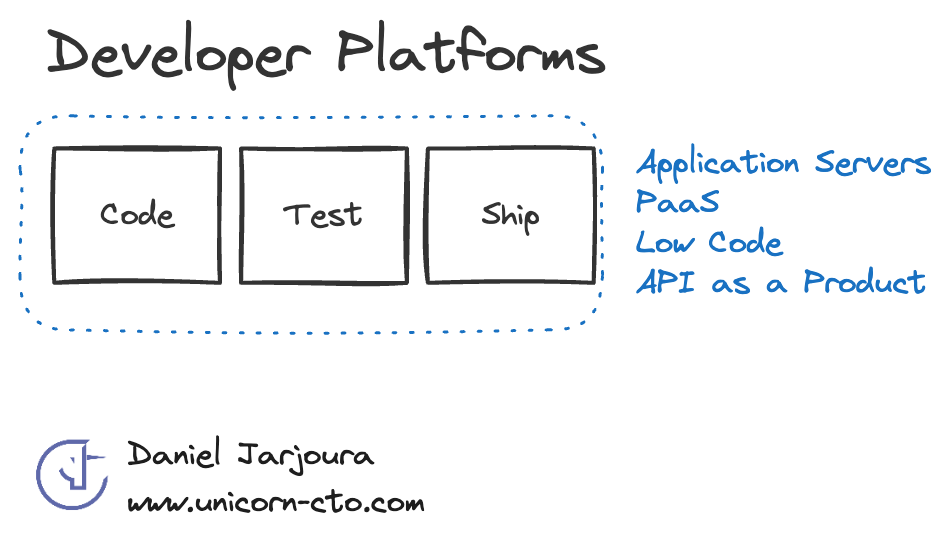When I first set foot in the startup world more than ten years ago, I was told a tale of two founders. In this tale, a business founder, usually with an MBA from a reputable institution, would take care of the “business”. And there was a technical founder, usually an engineer, or better, a PhD, who would take care of the “tech”. In this tale, tech founders couldn’t make it without their business counter-side and vice-versa. And I always found this vision of startup founding to be utterly bullshit.
I spent most of the last ten years convincing developers they didn’t need a business co-founder to launch a startup. They just had to focus on the market they knew best: other developers. And even though I was often told that “the shoemaker's children go barefoot”, I always thought there was a huge market targeting developers. Today, this market is $64B ARR driven by 1,500 companies.
In this post, highly inspired by Tyler Jewell’s Developer-Led Landscape series, I want to shed more light on Developer-First companies and their industry categories.
Developer-First companies
Developer-First (or Developer-Led) companies prioritise developers' needs and experiences in the creation and marketing of their products. Often founded by engineers themselves, these companies place a significant emphasis on crafting products that resonate deeply with developers, aiming to win their loyalty and advocacy.
Another way of defining Developer-First products is that developers buy, influence the purchase or consume them directly. Leveraging this definition, we can identify four distinct categories that collectively advance software creation, deployment, and management.

The first primary category is the Software Delivery Lifecycle, which encapsulates the end-to-end software development process. It includes:
- Project Management and Agile methodologies, with products enabling teams to manage their organisation’s software development responsively and iteratively (Trello, Jira, Asana…)
- ChatOps, with products facilitating conversation-driven collaboration (Slack, Mattermost, Discord…)
- RPA for DevOps, with products automating repetitive tasks within development pipelines (UIPath…)
- Engineering Efficiency, with products improving the efficiency of software development and engineering teams (LinearB, Jellyfish…)
- Developer Enablement, with products empowering and increasing the productivity of development teams (Konfuzio, PluralSight…)
- Value Stream Management, with products helping organisations deliver customer-centric products (Plutora…)

The second category is Developer Tools, a collection of instruments designed for individual software construction. It includes:
- Languages (Microsoft, Oracle, Apple)
- SDKs and Frameworks, building blocks allowing for rapid and standardised development
- Design IDEs and Code IDEs, providing the environments where developers can craft and visualise code efficiently (Vercel, Microsoft, Replit)
- Development Environments, offering integrated and streamlined developer experiences (GitHub, GitLab)
- API IDEs, specialised tools for API development (SmartBear Swagger, Talend Restlet, Oracle Apiary…)

The third category is Developer Infrastructure, which englobes hardware and software products supporting the distributed and repeatable construction of software. It includes:
- Version Control, with tools for tracking and managing code changes (GitHub, GitLab…)
- CI/CD and Build tools, central to automating the software release process (Jenkins, CircleCI)
- Test Automation, enabling reduced feedback cycle and time saving (Selenium)
- Code & App Security, for securing and managing the quality of the software codebase (Synopsys, GitGuardian)
- Artefact Repository, allowing teams to manage all their binary artefacts efficiently (JFrog)
- Config & GitOps to streamline infrastructure and application development lifecycle management (Weaveworks, Jenkins X)
- SRE & Debugging essential for maintaining system reliability and resolving code issues efficiently (Datadog)

Our model's fourth and last category is Developer Platforms, which constitute the ecosystems and frameworks upon which developers build, deploy, and manage applications across various stages of the software lifecycle. It includes:
- Application Servers, designed to host and serve various types of applications (Red Hat, Apache)
- PaaS solutions provide developers with the tools they need to build and deploy applications without having to manage the underlying infrastructure (Heroku, Platform.sh)
- Low Code tools enable developers to build applications with minimal hand-coding (OutSystems, LangChain)
- API as a Product, which can be considered as a whole industry in itself, allows developers to take building blocks and uniquely combine them to create great products (Stripe, Twilio)

About AI
Generative AI, with its capability to create content, design, and code, is poised to introduce a paradigm shift in the Developer-First landscape. This emerging technology could challenge the existing frameworks and tools by automating complex processes and enabling developers to transcend traditional coding constraints.
Generative AI systems, powered by machine learning models like GPT and others, have begun to demonstrate an ability to generate human-like text and code snippets, user interfaces, and even whole applications based on high-level descriptions. For instance, platforms like OpenAI Codex can interpret natural language and output functional code, potentially streamlining development. This capability could redefine the role of tools in the Software Delivery Lifecycle, particularly in areas like Project Management and Agile methodologies, where AI could predict and plan sprints or tasks autonomously, or in Developer Tools, where AI-generated code could reduce the reliance on large libraries and frameworks.
Within Developer Infrastructure, generative AI could enhance Version Control systems by auto-generating commit messages or code changes for bug fixes. CI/CD pipelines could evolve to include AI-driven test generation and optimisation, while Test Automation tools could leverage AI to create more sophisticated, context-aware tests. In Code & App Security, AI could preemptively identify vulnerabilities by understanding the code's intent and context beyond the syntax.
For Developer Platforms, the influence of generative AI might be even more pronounced. PaaS providers may offer AI-powered services that automate the setup and scaling of applications. At the same time, Low Code platforms could become increasingly intelligent, enabling developers to build applications requiring little to no hand-coding.
Still rooting for Developer-First companies
While the advent of generative AI presents an incredible leap forward in technology, it is clear that developers are far from being replaced. Instead, they are becoming more empowered. The unique human elements of creativity, intuition, and the ability to navigate complex problem-solving landscapes ensure that developers will continue to be the architects of our digital world for the foreseeable future.
The Developer-First companies stand at the forefront of this exciting evolution. As we continue to witness rapid growth and transformation within this ecosystem, the addressable markets for such companies are expanding at an unprecedented pace. The innovation potential is not just immense; it is virtually limitless.
My vested interest in the Developer-First landscape is rooted in the belief that these companies are not just building software but crafting the foundation upon which our future is being built. As we look to the future, we can anticipate not just a wave of new products and services but also a reimagining of the developer's role — one that balances the mastery of code with the artistry of innovation.